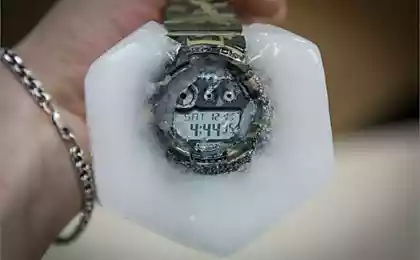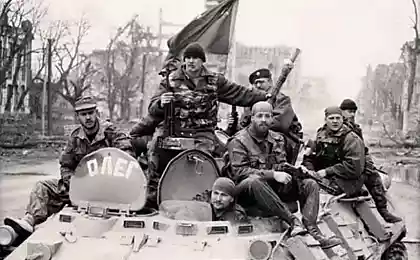2733
Watch sovetiko
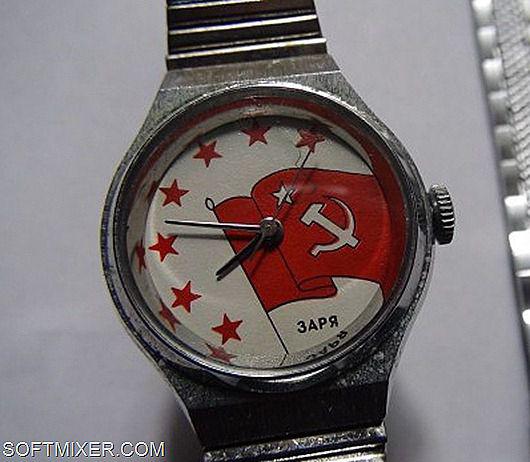
Everything connected with the time, the Soviet Union had a special significance. In particular, a good watch on your wrist made of ordinary engineer or doctor object worthy of female attention. Well, what else to stand out? Clothing all had approximately the same, hair - within the allowable standard salary - within allowable tariff rate. And some "Ray", "Rocket" or "Electronics" and talked about the financial possibilities, and about character traits ...
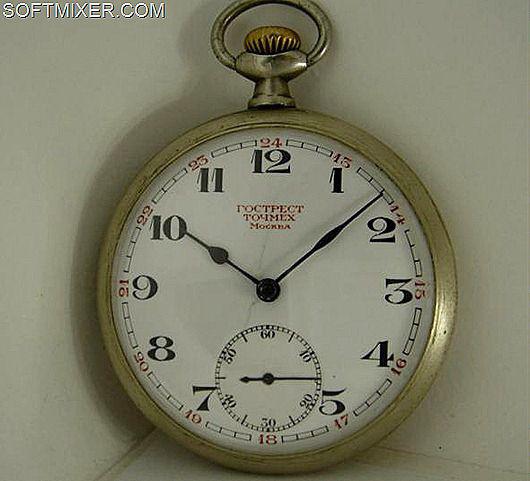
After the October Revolution, the Bolsheviks got very meager "legacy" in the field of horology. Until 1919, the Agency Hours, is a subdivision of the Supreme Economic Council (the Supreme Economic Council), supervised the conduct of watchmaking in the country.
Subsequently, in 1920, on the basis of the Agency established General Directorate of Fine Mechanics, bringing together the former factory and Platov Reinovo producing clocks (caught in the moment Stopped), former studio G.Mozer, and save storage pieces and handicraft workshops.
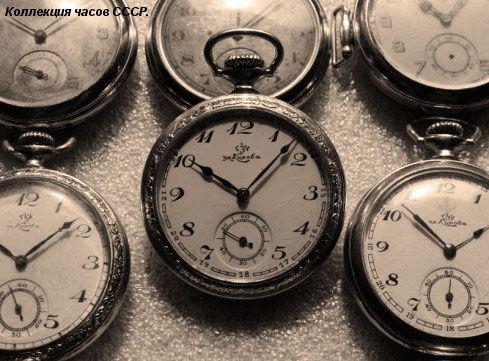
In an effort to establish its own production, Soviet diplomats are futile negotiations with the Swiss developers. And only in 1929, the year of purchase of two bankrupt companies time America has made possible the opening of its own Soviet factories specializing in the production of clocks and watches.
Thus, the company repurchased become the basis for the creation of the 1st and 2nd State Watch Factory, started to work in Moscow in the 1930s. A "First State Plant precise technical Stones" (TTK-1), created in Peterhof based kamnegranilnoy factory in 1931, began producing stones directly to the watch industry. As a result, the first All plant produces long wrist and pocket watches, and 2nd Watch Factory - Alarm clock and electric clocks for businesses.
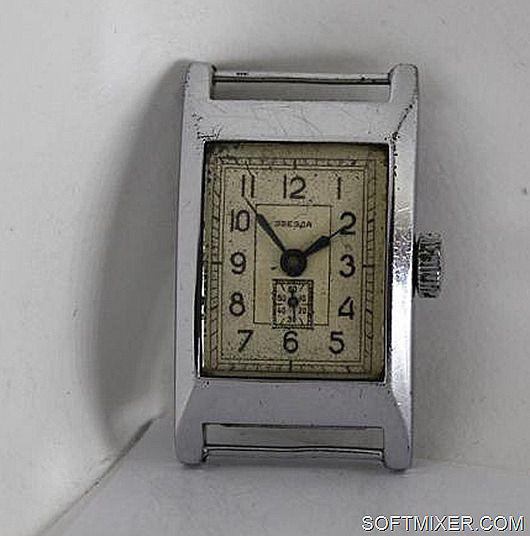
In 1936, the Soviet government makes a deal with the French watch company «Lip» for the purchase of watch movements and components, and then the production process lines, and in December 1938 appeared on sale product of international cooperation - women's watch brand "Mill". Made them into 3 Goschaszavode, and on the eve of the war all the watches, manufactured here, got a new name "The Star».

Found a lot of pocket watches those years, converted into a wrist. Those who wish to bring a repair watchmaker nationwide pocket watch (or just money), master welded bow to Pocket enclosures. There's also custom manufactured Wrist housing, sometimes of silver and gold, do workshops and dials - a result watches are very similar to the factory.
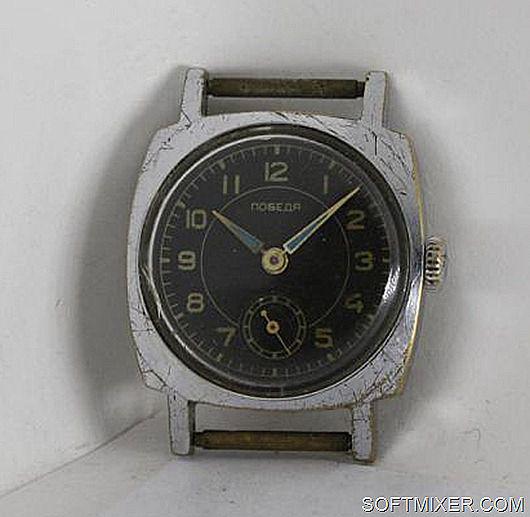
With the onset of World War II is due for yet another famous Soviet watch factory "Tchistopol" opened in the Republic of Tatarstan in the emergency order. Already in the summer of 1942, this plant is actively working to ensure that the needs of the military industry, and later became one of the leading factories of the USSR, produces watches brands "Victory", "Peace", "East", "Space", as well as road and street hours.
A 1965-year "Tchistopol" becomes the official supplier of watches for the Ministry of Defense of the USSR. Factory lasted until 2010 year, but was subsequently declared bankrupt and production hours were transferred to subsidiaries' Chistopol ».
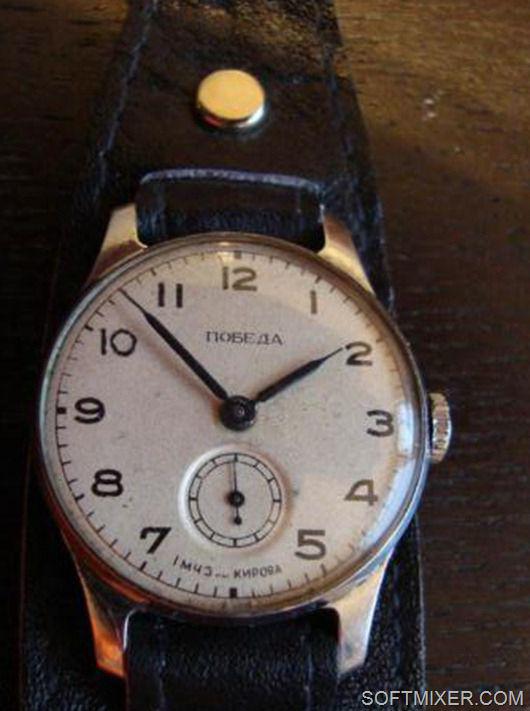
A month before the hoisting of the flag of victory over the Reichstag, in April 1945, the watchmakers at special mission: the preparation for the release of a new watch K-26 "Victory". Serial production of "Victory" started in 1946. Name, design and specifications were approved in person hours IV Stalin, and they were produced until 1953.

In 1949, specifically for the Air Force began to produce watches "Shturmanskie" who trade have been reported. April 12, 1961, these watches were in space.
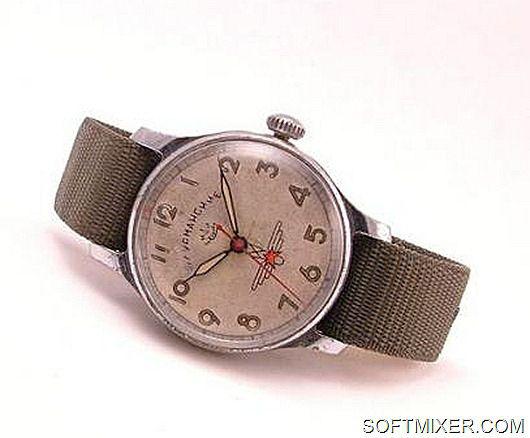

Each era chooses its iconic watches. In the early 60's they were "Shturmanskie-Gagarin", and then cult "Arrow", which he wore on his hand cosmonaut Alexei Leonov spacewalk. This fact was of great importance during the Cold War and the rivalry with the West. Say, is not your "Omega" flown in space, and our "Arrow", the first hours of the production plant.
This kind of "Arrows", released only for the command of the Air Force. They are fixed to the sleeve of the suit. The mechanism has been fitted with a stopwatch and a 45-minute chronograph counter.
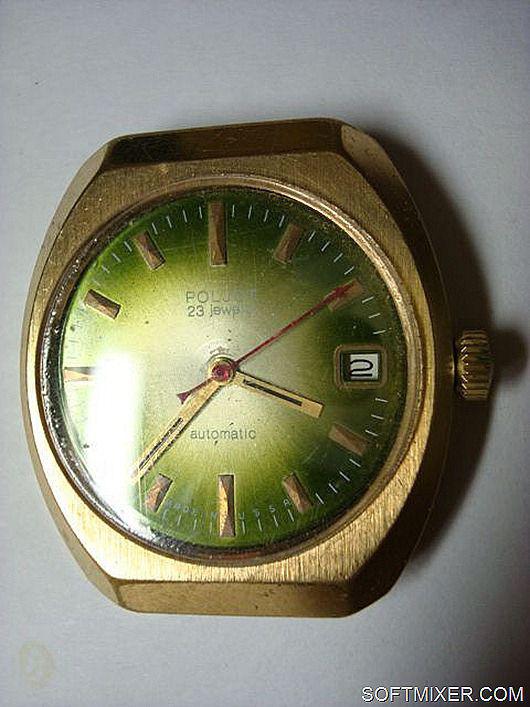
By the way, for those who do not know, that means the number of stones (in this case 23 stone) and what they do. As a child, the question of pebbles in hours, adults usually joked that the hours allegedly lacks even a pair of stones. On the one put, and other slam.

In fact, the number of stones indicating the number of jewels, which were used as sliding bearings on the trunnion gears.
All parts are in motion hours. And if there was metal, it would be quickly erased. A ruby is not erased centuries. The more the stones, the greater durability of the watch. Because ruby stones do not wear themselves and almost no wear axle gears. Good and reliable mechanisms were made on 30 stones.

The most popular gift for women! Watch "Ray." Many stayed and probably still work.

The largest wristwatch that had a chance to meet - our Soviet diving watch.
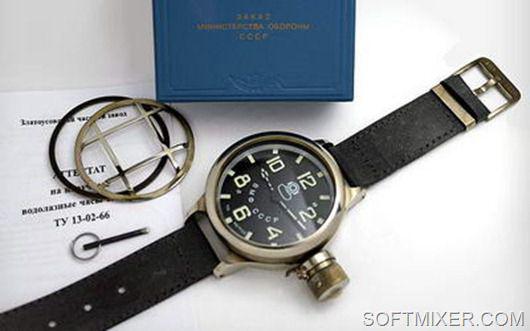
A little about modern copies diving watches. Chelyabinsk Watch Factory in the post-perestroika released many souvenir watches made in the same case and design that dive watch ZCHZ. However, the technology has been broken - instead of steel used chrome-plated brass, and about water resistance at all forgotten. As a result of these remakes leak, break, coating peeling off.
It is possible that these watches are doing so far, because they are still selling a lot. Literally every shop on the Arbat dazzles "Soviet submarine clock", which is actually nothing more than a fake. These watches because of the small price popular with tourists, and they were even done with chronograph and alarm clock (it also had to guess, and as a diver hears it ???). The watch is also often novodelny set of documents dating from 1970-1980 years.

The main achievement of the 70's - electronic watches "Electronics". They shone, food and smote all their modern chrome design. From this moment all chased it for such alluring graphic figures.
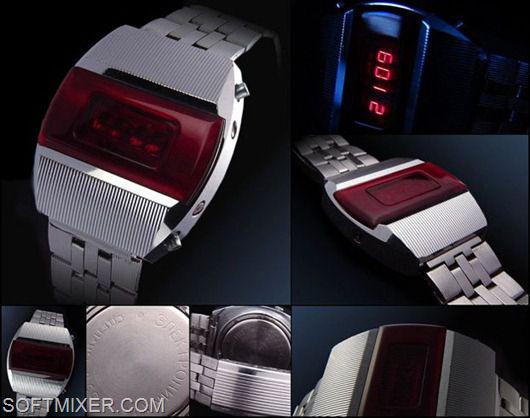


Also produces watches for children.
Most popular with the fox.
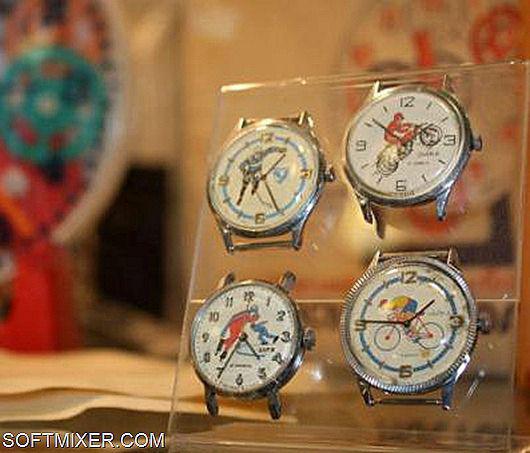
Children and youth watches USSR.
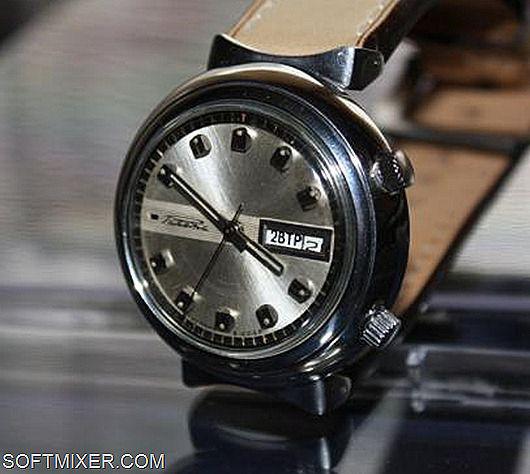
Steel watch more than gold ?! Rocket 3031. Stainless steel, inside mechanism 33 stones with dual calendar, automatic winding and Alarm! Watches sold for 150 rubles. Only ... they did not sell. Was not willing to buy steel watch for the money - gold were cheaper, and more on the surrender could buy conventional missiles. A gold - they'll always cooler! ..

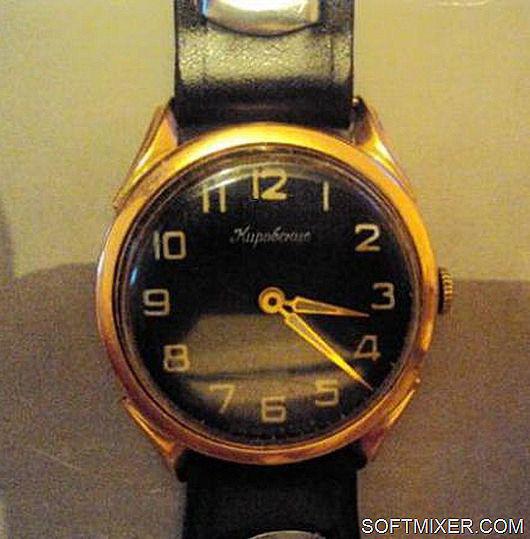
In the Soviet Union also made a gold watch.
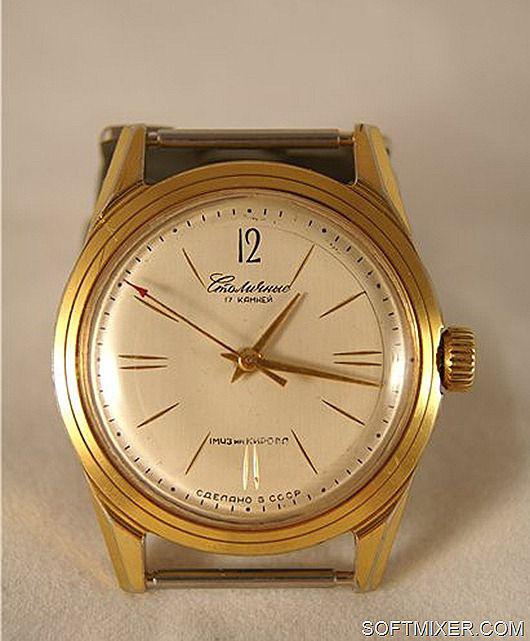
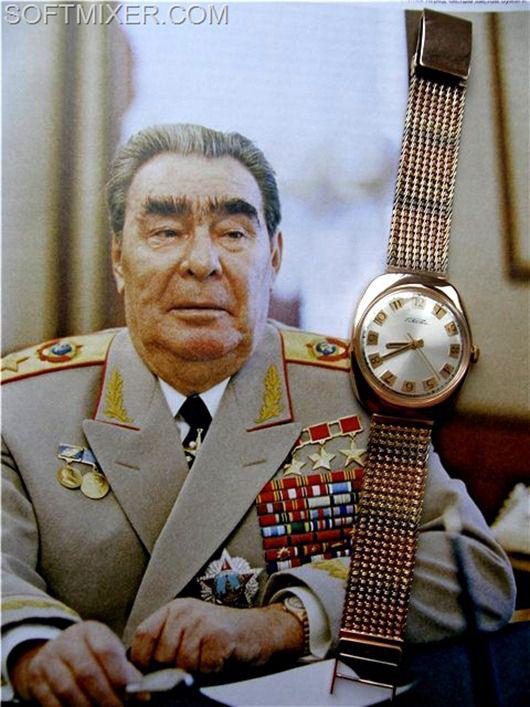
Leonid Brezhnev was wearing a gold watch "Rocket", which was designed in the 60s.
(Unlike modern managers - my remark)

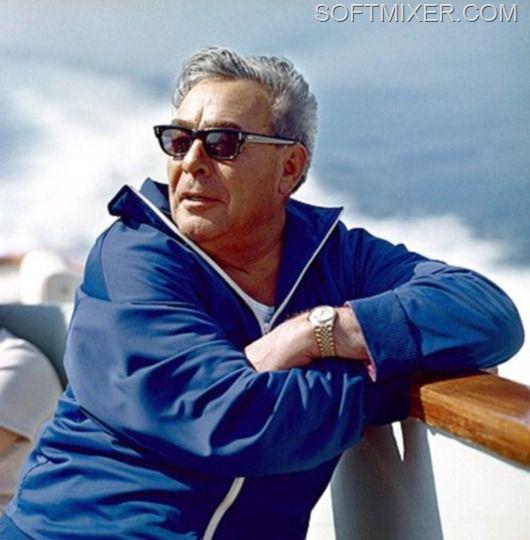

Today, many watch produced in the Soviet years, attracted the attention of collectors and aficionados of stylish and elegant veschey.Naprimer, watch "70 years of KGB of Belarus" went on the auction "Gelos" for a tidy sum.
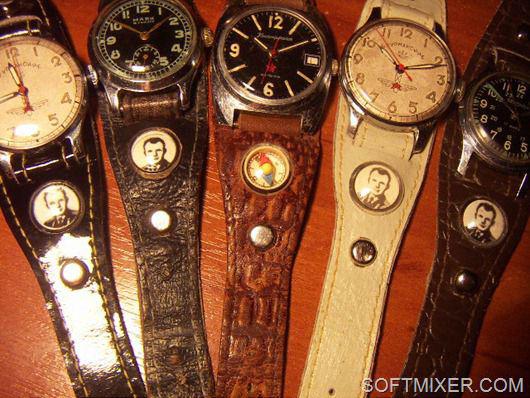

Many of course, the question arises: "What are the most expensive watches released in the USSR»?
Some of the most expensive watches, postwar Kirovskie chrono. Very beautiful.
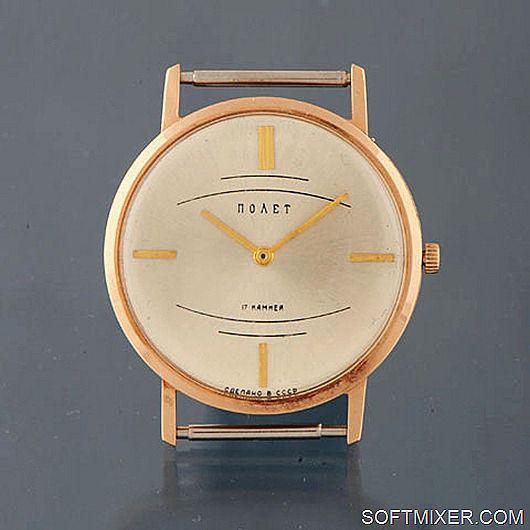
Very rare super thin Flight. When and where will pop up, then the cost will be fantastically.
(Rummage at susekam)
--img32--












